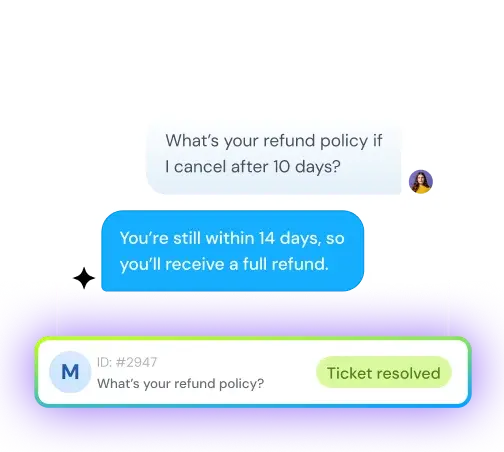Help desk software requirements: 8 Essentials you need to know
Vaishali Jayaprakash
Sep 10, 2025

Choosing the right help desk software starts with understanding your core help desk software requirements. With dozens of helpdesk solutions promising automation, faster replies, and smoother workflows, it’s easy to get overwhelmed. The truth is only a few features truly matter. In this blog, we break down the 8 essential requirements every team should look for before investing in any help desk tool.
What is help desk ticketing software?
Help desk ticketing software is a tool to manage the support requests of the customers.
It turns each request into a ticket that tracks details like issue, status, and owner. Tickets are organized, prioritized and assigned to the respective agents accordingly. It helps in resolving issues faster, and ensures no request is missed. Overall customer satisfaction and support efficiency is improved.
Your team's central hub becomes the help desk software that keeps all tasks organized in one place for better productivity. Businesses can scale their customer service processes without compromising quality or personal attention. This piece will explore eight key help desk ticketing system requirements you should consider to choose the right help desk software for your business
1. User-Friendly Interface
A well-designed interface forms the life-blood of effective help desk software requirements. The best ticketing systems blend powerful features with accessible design. Your support team can solve problems instead of getting lost in complex menus.
SparrowDesk puts interface first. Every screen is clean, intuitive, and easy to navigate, so agents spend less time clicking around and more time resolving tickets.
Complex workflows are simplified, important information is always visible, and common actions are just a click away making the software feel effortless to use while keeping your team productive.
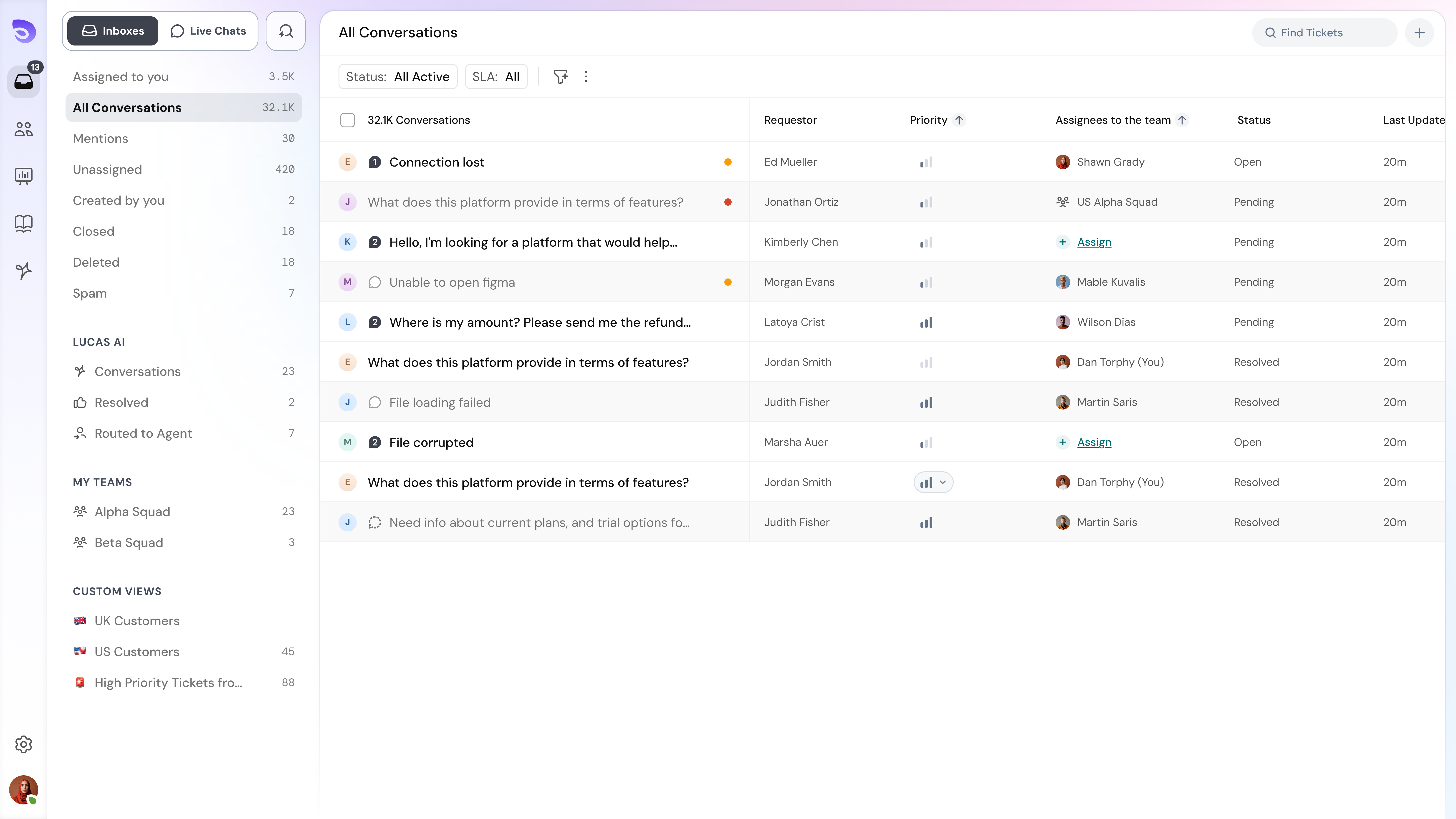
Try it yourself with a 14-day free trial and see how a well-designed interface transforms your support workflow.
14-day free trial • Cancel Anytime • No Credit Card Required • No Strings Attached
Why simplicity matters for agents
Your help desk software's interface affects how fast agents resolve customer issues. Complex systems slow down resolution workflows and frustrate support teams. This ended up hurting service quality. An accessible design improves team performance and speeds up ticket resolutions.
Clear navigation stands as the life-blood of user satisfaction. Support agents work within the help desk system for hours each day. Every extra click or confusing menu creates friction. An optimized interface removes clutter and organizes information through features like shared inboxes.
A user-friendly interface brings benefits beyond convenience:
- Fewer errors in ticket management
- Higher agent satisfaction and retention
- Better focus on customer needs instead of system problems
- Improved consistency in service delivery
Your agents can find and manage questions without confusion or delay with a well-designed help desk system that has simple navigation. Your help desk management software won't perform at its best if agents don't deal very well with using it.
Custom dashboards and navigation
Custom dashboards change how agents interact with help desk software. These tailored views help support staff organize tasks based on ticket urgency or SLA deadlines. Agents can set up their workspace to show information that matters most to their role.
Knowing how to create custom dashboards with report widgets tailored to individual needs makes monitoring key metrics quick and efficient. To cite an instance, agents can drag and drop widgets to different positions. This helps them create workflows that match their priorities.
Support teams handle different responsibilities - some focus on specific channels while others handle escalated issues. The interface should adapt to specific agent types or teams based on their role, employment status, or skill set. This optimization gives agents quick access to the tools and data they need.
When evaluating help desk requirements, look for software that offers:
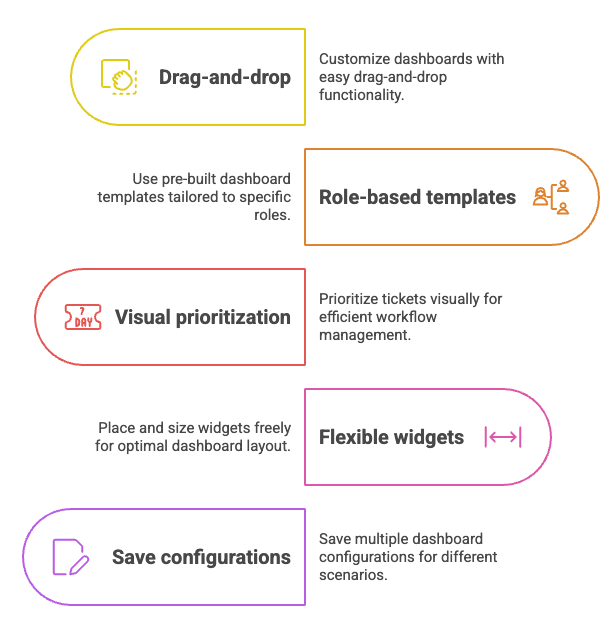
Custom dashboards let agents build a command center that shows all relevant information at once. They don't need to switch between different screens constantly.
Reducing onboarding time
Interface design should be a vital part of your help desk requirements document because it affects training efficiency. Intuitive help desk software cuts down the time needed to onboard new team members.
New agents become productive faster with a user-friendly interface, often needing minimal training. They can focus on developing customer service skills instead of spending weeks learning complex navigation paths and hidden features. This faster onboarding saves costs and improves service consistency.
The best help desk software functional requirements should specify an interface that:
- Uses consistent design patterns throughout
- Offers contextual help and guidance
- Provides clear feedback on actions
- Uses familiar conventions from common software
- Offers progressive complexity (simple features first, advanced options as needed)
Mobile accessibility plays a significant role in modern support operations. Mobile-friendly ticketing systems enable remote support. Agents can help customers from anywhere. This flexibility streamlines processes while supporting work-from-home policies.
Think about how the interface will affect both your current team and future hires when selecting help desk software. Systems with steep learning curves create ongoing training challenges. Intuitive software becomes an asset that reduces stress and improves productivity throughout your support operation.
2. Robust ticket management system
A reliable ticket management system sits at the heart of any good help desk software. This system turns customer questions into trackable, actionable items. Your help desk system feature must include this core function to prevent customer issues from slipping away.
Ticket categorization and prioritization
Support teams can sort incoming requests by nature, urgency, and complexity through smart ticket categorization. Most help desk solutions rank tickets as Critical, High, Normal, Low, and Planned. The right priority levels will speed up team response, power automations, and help customers get faster answers.
Teams that skip proper prioritization risk making urgent customers wait too long while staff scatter their attention. The best ticketing system requirements should include:
- Problem scope: Does the issue affect one user, a whole account, or all customers?
- Urgency metrics: Security breaches need instant attention while feature requests fit planned updates
- Response time tracking: High-priority tickets need faster responses
- Escalation paths: Clear steps to raise critical issues
Large companies often follow the ITIL framework for priority guidelines. System outages and security breaches rank as critical, while feature requests and documentation updates fall under planned work.
Automated routing and assignment
Teams waste precious time with manual ticket distribution, which can lead to mistakes. McKinsey reports 29% of customer service agent duties could be automated, with ticket routing leading the list. Your help desk requirements documents should specify systems that send tickets to the right specialist right away.
Smart routing can assign tickets based on:
- Agent expertise and skills
- Available bandwidth
- Custom properties like contact channel or customer level
- SLA deadlines and requirements
Round-robin assignment spreads work fairly and stops agents from picking easy tickets. Teams work better when they don't waste time manually sorting tickets.
Status tracking and merging
Clear status tracking shows everyone where each ticket stands. Your help desk software functional requirements should let you customize status options beyond "open" and "closed." Many teams add statuses like "pending customer response" or "awaiting approval."
Ticket merging helps keep your help desk tidy. Customers sometimes send multiple messages about one issue or add details in separate emails. Merging these tickets:
- Unites communication history
- Stops duplicate work
- Shows the full issue timeline
- Keeps resolution time metrics accurate
Merged sub-tickets usually close while their tags, followers, and extra data move to the main ticket. This creates a complete record.
Custom tags and filters
Tags add extra organization beyond simple categories. Unlike categories that limit one assignment per ticket, tags let you add multiple labels for context and better searching. Teams can create tags for specific:
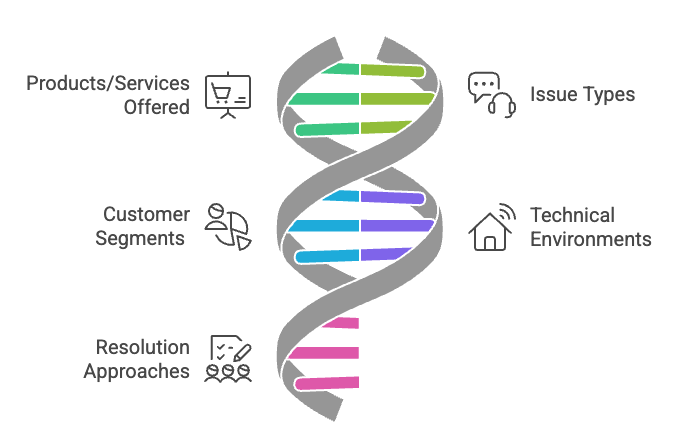
Tags work with filters to help teams direct their ticket backlog. Filters sort tickets by priority, status, creation date, last activity, and custom tags. Teams can save these filtered views for quick access, giving different members their own optimized workflows.
The right help desk management software combines these four elements—categorization, automation, tracking, and tagging. This creates a system that balances structure with flexibility to handle customer issues quickly and efficiently.
One tool that checks all these boxes is SparrowDesk. Experience it firsthand and see how effortlessly it works.
The results speak for themselves.
14-day free trial • Cancel Anytime • No Credit Card Required • No Strings Attached
3. Multi-channel support capabilities
Modern customers want to reach your support team through their favorite channels. Multi-channel capabilities are a significant help desk software requirement. Your software should connect these communication pathways into one system that's powerful and simple to manage.
Email, phone, and live chat integration
Email is the life-blood of customer support. Most consumers prefer it to communicate with organizations. This channel lets customers submit issues and get back to their tasks while waiting for your response. A good help desk system turns emails into tickets and tracks them through resolution without losing messages in crowded inboxes.
Phone support gives customers the human touch they still value. Digital channels are rising, but voice communication provides:
- Immediate feedback from live agents
- Personal interaction that builds trust
- Clear communication for complex issues
Your ticketing system requirements should include software that helps agents interact personally instead of reading scripts. The best systems record calls and connect them to customer profiles for future reference.
Live chat gives customers the quick responses they just need. Immediate, personalized attention builds brand loyalty better than delayed communications. Your help desk software should have live chat features that:
- Track website areas with most customer questions
- Give pre-defined responses to solve problems faster
- Send chats to the right technical teams
- Get feedback on customer satisfaction
The best help desk management software merges these channels into your support workflow instead of treating them separately.
Social media and messaging apps
Customers use social media to discuss your brand, share recommendations, and get help. Your help desk requirements document should specify social media integration with Facebook, Twitter, Instagram, and YouTube.
Customers find it easier to get support through social media than traditional methods. Messages can slip through the cracks without proper integration. The software should:
- Turn social comments and direct messages into trackable tickets
- Let agents respond directly from the help desk interface
- Keep conversation history for context
- Watch brand mentions across platforms
Messaging apps like WhatsApp have become essential support channels. Modern help desk software functional requirements should let you handle messaging app conversations from the same interface as other channels.
Some solutions let you create dedicated teams for social customer care. They turn only relevant messages into tickets based on keywords. This filtering helps your team focus on real support issues rather than general social engagement.
Unified inbox for all channels
A unified inbox that brings all communications into one dashboard is vital for multi-channel support. This centralized approach stops the chaos of switching between platforms and makes sure every customer query gets answered.
A unified inbox treats all channels equally. Customers choose their preferred method while agents see the complete conversation history. This approach offers key benefits:
- Optimized agent workflows (no platform switching)
- Complete customer context across channels
- Quality responses whatever the channel
- Better performance tracking
Only 29% of customers say they get consistent experiences across channels, though 71% expect this consistency. A unified inbox helps bridge this gap.
Advanced help desk systems support hybrid ticket streams that follow a customer's experience across different channels while keeping a single ticket thread. If a customer calls, emails, then uses live chat, agents see all interactions in one ticket with complete context.
Your help desk software should funnel all customer communications into a single management system. This unified approach improves efficiency and creates an exceptional experience that builds customer loyalty across every touchpoint.
4. Automation and workflow management
Good help desk software requirements should include powerful automation tools that reduce workloads and speed up resolutions. These features change how support teams handle everyday tasks. They free up agents to focus on complex customer issues.
Canned responses and macros
Pre-written templates, also known as canned responses or macros, save agents from typing similar messages over and over. These ready-made replies let agents answer common questions with a few clicks. This improves consistency in customer interactions.
Well-implemented canned responses offer several advantages:
- Increased efficiency: Agents handle more tickets daily as response times drop
- Improved quality assurance: Pre-approved templates ensure customers get accurate information matching your brand voice
- Consistent communication: Customers receive similar information about specific queries, whatever agent handles their request
- Faster onboarding: New agents learn company policies while producing accurate responses
Static templates can sound robotic and might not fit specific customer situations. Your help desk management software should allow template personalization. This ensures messages feel customized even when based on standard text.
SLA-based escalation rules
Service Level Agreements (SLAs) set response and resolution time targets based on ticket priority. Your help desk requirements document should explain how your software tracks deadlines and escalates issues.
Smart SLA tracking uses several automated systems. Automation rules begin tracking SLAs when someone creates or updates a ticket. The system then applies different SLA policies based on ticket types. Technical issues might need 1-hour responses, while feature requests could take 24 hours.
Your help desk system becomes powerful with automated escalation for at-risk SLA targets. It should:
- Alert agents about approaching deadlines
- Escalate overdue tickets to managers automatically
- Send notifications for exceeded response times
- Use different SLA rules for each customer tier or issue type
Companies using automated SLA tracking see 40% fewer violations and faster responses for high-value customers.
Automated follow-ups and reminders
A vital ticketing system requirement prevents tickets from getting lost or abandoned. Automated follow-ups make sure important issues stay visible.
Follow-up automation works in multiple ways. It reminds agents about tickets needing attention when there's no activity. It also prompts customers who haven't responded to keep conversations going.
Automated follow-ups improve your bottom line. Automated reminders help retain customers by:
- Sending subscription renewal notices
- Following up on failed payments
- Delivering grace period messages after expiry
Good help desk software lets agents schedule follow-ups for specific intervals or exact dates. These automations cancel automatically when customers reply before the scheduled time.
Smart automation tools change support from reactive to proactive. Strategic workflows help teams predict customer needs and prevent issues from growing. They maintain relationships through consistent communication without manual work.
One tool that brings all of this together is SparrowDesk. Its intuitive interface and AI-powered automation make it easy to handle repetitive tasks, track SLAs, and stay on top of follow-ups, letting your team focus on what really matters resolving complex customer issues quickly and efficiently.
14-day free trial • Cancel Anytime • No Credit Card Required • No Strings Attached
5. Knowledge base and self-service options
Modern help desk software requirements must include resilient self-service options that enable customers to find answers without agent assistance. Research shows that 67% of customers prefer self-service over talking to company representatives about basic questions.
Searchable help articles
A well-laid-out knowledge base acts as the cornerstone of effective self-service. This central library contains articles, FAQs, tutorials, and guides that answer common questions about products or services. The right help desk software makes these resources available round the clock, giving customers quick answers without any wait time.
Companies with self-service knowledge bases see good reduction in support tickets. Support teams can dedicate more time to complex issues that need human expertise because of reduced ticket volume.
Your help desk requirements should include:
- Advanced search capabilities that quickly surface specific answers
- Clear categorization and tagging systems that organize content
- Analytics that identify knowledge gaps from common searches
- Tools that keep content current and relevant
Smart search optimization helps customers find relevant results the moment they type queries. Companies can drive more traffic to help articles by targeting popular search terms through proper SEO.
Community forums and FAQs
Community forums let customers help each other and create a thriving ecosystem of peer support. These forums use a three-level structure: categories, forums, and topics, making them user-friendly.
Community integration can transform support operations dramatically.
Quality help desk management software should provide tools that organize discussions into relevant categories and let both customers and agents participate. Strong moderation features maintain quality standards while encouraging customer collaboration.
FAQ sections work alongside knowledge bases to provide quick solutions to common issues. These tried-and-tested answers create a direct path that helps customers solve simple problems without contacting support.
Ticket deflection through suggestions
Smart ticket deflection cuts incoming support requests by showing self-service resources at the perfect moment. AI-powered help desk systems can suggest relevant knowledge base articles as customers type their questions into the support portal.
This approach benefits everyone. Customers receive instant answers while support teams focus on challenging issues instead of handling routine requests.
Your help desk requirements document should include these ticket deflection features:
- Automatic suggestion of relevant articles during query typing
- Smart search that grasps customer intent
- Clear metrics for tracking deflection success
- Seamless integration between knowledge base and ticketing system
Analytics drive deflection optimization. Teams can improve self-service content by monitoring which articles prevent tickets and spotting knowledge gaps.
Self-service options increase customer satisfaction while reducing support costs. Modern consumers expect instant information access, making self-service portals essential for businesses that need to meet today's customer expectations.
The ideal ticketing system requirements should ensure your solution combines knowledge base, community forums, and ticket deflection into one smooth self-service experience. This integration reduces support workload and enhances customer satisfaction.
SparrowDesk brings all of this together in one seamless platform. Try it for yourself and see how smart self-service tools help customers help themselves, while your team focuses on solving complex issues efficiently.
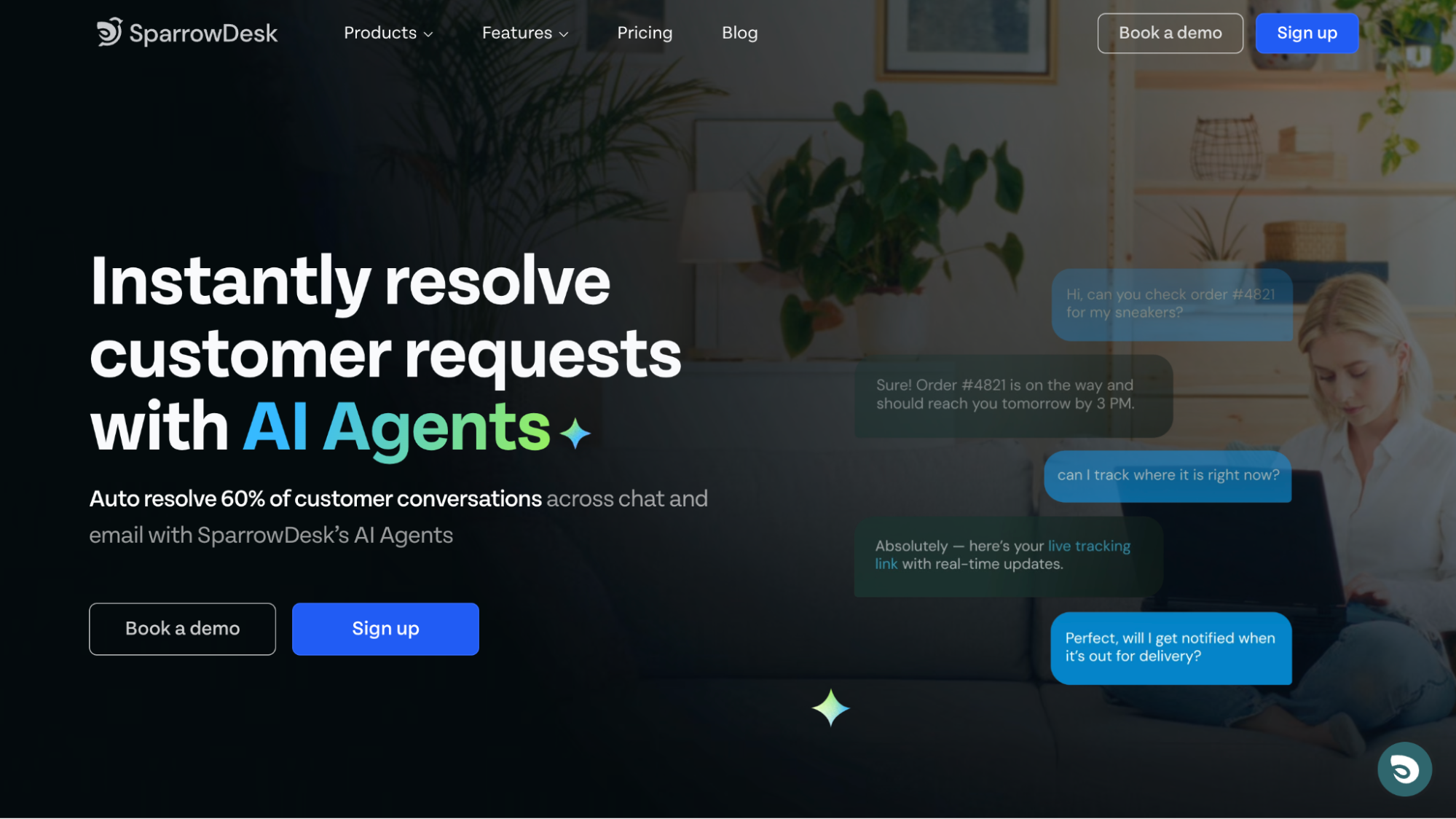
14-day free trial • Cancel Anytime • No Credit Card Required • No Strings Attached
6. Reporting and analytics tools
Evidence-based decision making serves as the foundation of support operations that work well. Quality reporting and analytics tools become vital components in any help desk software. These tools turn raw support data into practical insights that improve strategic planning.
Custom dashboards and KPIs
Quality help desk requirements should include dashboards you can customize to show important metrics visually. The best dashboard solutions come with over 200 prebuilt reports ready to use. Support teams can track vital performance indicators without complex configuration.
The best help desk management software lets teams:
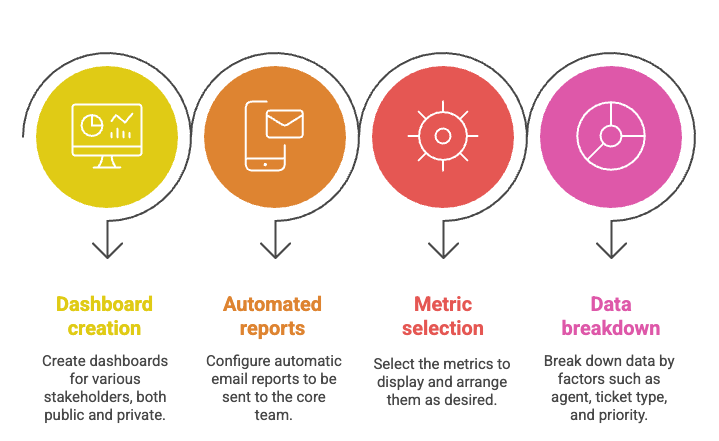
Custom dashboards enable managers to see progress toward service goals. They show the value their teams bring to the organization. Teams can spot bottlenecks, assign resources better, and deliver better service quality.
Live performance tracking
Historical reporting matters, but live analytics have become everything in a help desk system feature. These tools collect and analyze customer interaction data instantly to give quick insights about service desk operations.
Live tracking creates instant dashboards. Managers can watch agent performance, call queues, and wait times as they happen. Quick access to this information helps teams spot patterns, fix agent bottlenecks, and make operations run smoother.
Quality ticketing system requirements need tools that monitor service levels instantly. These systems keep an eye on KPIs like call answer times, abandonment rates, and how fast issues get solved to match service standards. Response time, resolution speed, and SLA compliance tell us how efficient the support team is.
Customer satisfaction metrics
Help desk reporting should focus on the main goal: happy customers. Customer Satisfaction Score (CSAT) shows how much users like your service. This score should be central to your help desk requirements document.
CSAT uses post-interaction surveys with a 1-5 scale to measure satisfaction. These surveys tell you about agent performance, how well issues get solved, and communication quality. Top IT help desks shoot for CSAT scores above 90%.
Net Promoter Score (NPS) works alongside CSAT to measure customer loyalty. It asks users if they would recommend your service to others. This score helps predict business growth and customer retention.
Your help desk software functional requirements should focus on systems that blend these satisfaction metrics into reporting dashboards. You can learn about specific areas needing improvement by filtering satisfaction data by agent, category, or contact group.
Good reporting tools do more than crunch numbers. They offer insights that boost your support operation and create better experiences for customers.
7. Security and compliance features
Customer data protection should be your top priority while choosing help desk software. A reliable security system protects sensitive information and keeps daily operations running smoothly. The rise in cyber threats has made strong security and compliance features essential help desk requirements.
Data encryption and access control
The best help desk software uses multiple protection layers to secure customer data. A 256-bit secure SSL connection encrypts all data between users and servers to minimize interception risks. Government agencies and financial institutions now consider this encryption level as their standard.
End-to-end encryption plays a crucial role by keeping messages and files safe from sender to recipient. This protection covers data during transmission and storage in databases.
Access control works with encryption to manage data visibility and usage. Role-based access control (RBAC) helps you:
- Assign specific permissions based on job roles
- Restrict access to sensitive information
- Ensure staff can only view data needed for their tasks
This method follows the least privilege principle, which limits users to accessing only what they need. Some systems also let you restrict software access to approved company networks through IP limitations.
Two-factor authentication
Two-factor authentication (2FA) creates an extra security barrier beyond passwords. Users must provide two different authentication factors:
- Something they know (password)
- Something they have (smartphone or token)
- Something they are (fingerprint)
Users need to enter a code from an authenticator app after typing their password. This setup substantially reduces unauthorized access risks. Even with a compromised password, attackers can't get past the second security layer.
2FA provides better protection against phishing attacks, reduces credential theft risk, and helps meet security regulations. Most systems provide backup codes for times when users can't reach their authenticator apps.
GDPR and HIPAA compliance
Your help desk requirements document must address regulatory compliance. The General Data Protection Regulation (GDPR) and Health Insurance Portability and Accountability Act (HIPAA) affect help desks that handle personal data.
GDPR protects EU citizens' personal information through clear consent processes and data usage transparency. HIPAA governs protected health information (PHI) in US healthcare.
Look for these key compliance features:
- Audit controls to track data access details
- Data backup systems to prevent information loss
- Incident response protocols for potential breaches
Compliance needs more than just software features - proper setup and implementation matter too. Check if vendors provide Business Associate Agreements (BAAs) when evaluating help desk system features, especially if you handle health information.
The best security and compliance features protect customer data without slowing down your support team's work.
8. Integration and customization options
A robust help desk software requirements list should include integration and customization options that link your support center to other business tools.
Custom ticket forms and workflows
Teams can create custom ticket forms to collect specific information based on request types. A simple drag-and-drop builder helps create unique forms for different departments or services. These forms collect precise data from the start and reduce the need for follow-up questions.
No-code automation helps streamline processes by:
- Auto-assigning tickets to appropriate teams
- Setting up multi-level approvals
- Scheduling follow-up actions
Branding and multi-brand support
Companies that manage multiple products or services can run separate support portals under one help desk management software. Each brand gets a customized portal with its own logos, colors, and knowledge bases. This setup creates customized customer experiences while giving agents a single interface to work with, eliminating the need to switch between accounts.
Key takeaways on help desk software requirements
Picking the right help desk software is crucial for businesses that want to deliver outstanding customer support. The eight requirements we discussed are the foundations of making a solid choice. Your team can focus on customers with an easy-to-use interface instead of wrestling with complicated systems. A resilient ticket management system creates a structure that keeps issues from slipping away.
Your customers can reach you through their preferred channels with multi-channel support. Automation reduces repetitive tasks and resolves issues faster. The knowledge base lets customers find answers on their own, which cuts down ticket numbers. Support data becomes practical insights through reporting tools that help you improve constantly.
Strong security features keep customer information safe without slowing down daily work. The software's ability to connect with other business tools creates smooth workflows between departments.
Note that the best help desk solution strikes a balance between powerful features and ease of use. Support agents need tools that boost their abilities without making things complex. Quick and consistent service is what customers expect on every channel. Take your time to assess each requirement against your business's needs before you decide.
Good help desk software does more than just organize tickets—it revolutionizes your customer service operation. This investment pays off through better satisfaction rates, improved team efficiency, and ended up building stronger customer loyalty.
Quick Summary: Help Desk Software Requirements: 8 Essentials You Need to Know
Choosing the right help desk software is critical for efficient customer support. The eight key requirements include:
- User-Friendly Interface – Simple, intuitive design that speeds up ticket handling and reduces onboarding time.
- Robust Ticket Management – Categorization, prioritization, automated routing, status tracking, and tagging to streamline issue resolution.
- Multi-Channel Support – Unified inbox for email, phone, chat, social media, and messaging apps to ensure no query is missed.
- Automation & Workflows – Canned responses, SLA rules, and follow-ups that reduce repetitive tasks and speed up resolutions.
- Knowledge Base & Self-Service – Articles, FAQs, and AI-driven ticket deflection to lower ticket volume and empower customers.
- Reporting & Analytics – Custom dashboards, live tracking, and CSAT/NPS insights for data-driven decision-making.
- Security & Compliance – Encryption, access control, 2FA, and GDPR/HIPAA compliance to protect customer data.
- Integration & Customization – Seamless connections with business tools, custom forms, and multi-brand support for scalability.
Key takeaway: The best help desk software balances power with simplicity—boosting team productivity, ensuring quick resolutions, and improving customer satisfaction while keeping operations secure and scalable.
Frequently Asked Questions
The essential features include a user-friendly interface, robust ticket management, multi-channel support capabilities, automation tools, knowledge base and self-service options, reporting and analytics tools, security features, and integration options.
A ticketing system should include various features such as creation of tickets, categorization, prioritization, assignment, tracking, and resolution. It should also offer other capabilities such as automation, reporting, and integration to streamline support processes and improve efficiency.
A knowledge base serves as a self-service resource for customers, allowing them to find answers to common questions without contacting support. This can significantly reduce ticket volume and improve customer satisfaction by providing instant solutions.
Multi-channel support is crucial because it allows customers to reach out through their preferred communication channels, whether it's email, phone, live chat, or social media. This improves customer experience and ensures no support requests are missed.
Help desk software ensures security and compliance through features like data encryption, access control, two-factor authentication, and built-in compliance with regulations like GDPR and HIPAA. These measures protect sensitive customer information and help businesses meet legal requirements.
